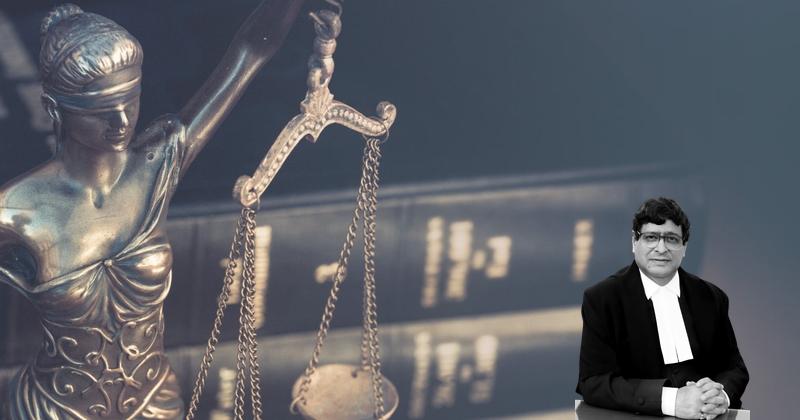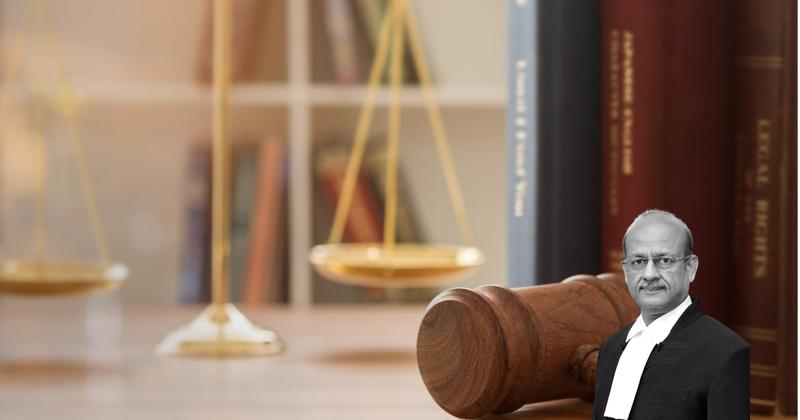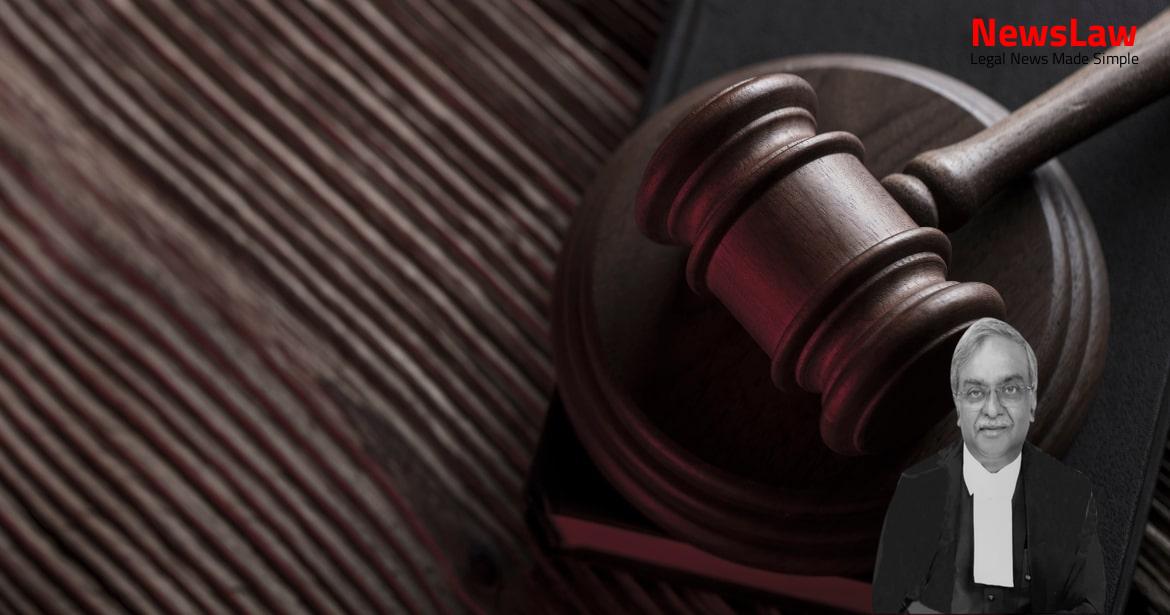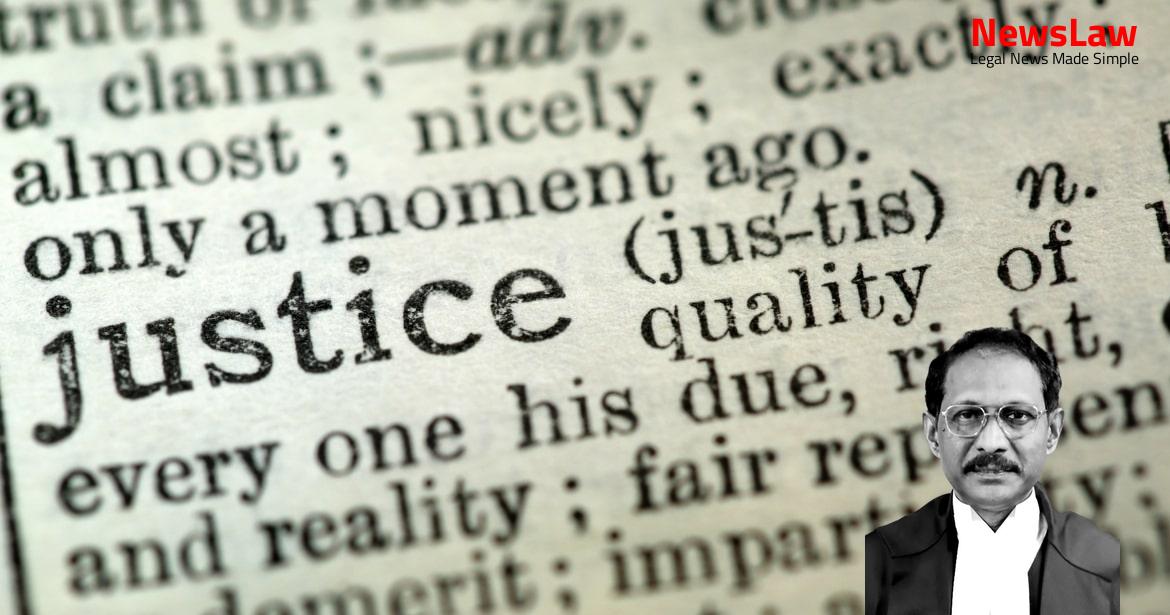It may not be out of place to state at this stage that in all four persons were put to trial including the two appellants herein in the Court of the Additional Sessions Judge, Pune for the offence punishable under Sections 302 and 323 read with Section 34 of the IPC. The case of the prosecution as unfolded in the evidence of the prosecution witnesses and also detailed in the first information report is that on the fateful day of the incident i.e., on 01.04.2001 at about 11.15 p.m., the first informant PW 1, namely, Asgar Shaikh (Ex. After sometime the appellant No 2 herein accompanied by the appellant No 1 herein and the other two co-accused who came to be acquitted by the Trial Court reached at the spot. The deceased Abbas Baig having suffered serious bleeding injuries was taken to the hospital in a rickshaw 3 owned by the PW 3, namely, Nasir Khan. When I reached somewhere near the shop by name Shri Sai Car Auto Consultant, I met my friend Abbas Baig (deceased) also a resident of Lohianagar, slum area, Pune. At around 11.45 PM, four persons, namely, Balu Khalde, Ramesh Mohite, Raju Mohite and Santosh Khalde assembled and started talking with us. I requested Nasir to keep a watch on Abbas Baig as he would reach and call the police. The inquest panchnama of the dead body of the deceased was drawn at the hospital itself.
At the end of the investigation chargesheet was filed for the offence punishable under Section 302 read with Section 34 of the IPC, in the Court of the learned Magistrate. 1 to 4, on the aforesaid day, date, time and place and during the course of the same transaction, either individually or in furtherance of your common intention, voluntarily caused hurt to complainant Ajgar Ibrahim Shaikh, by means of sickle and sword, which if used as a weapon of offence, would likely to cause death of said complainant, and thereby committed an offence punishable under Section 324 of the Indian Penal Code simplicetor or Section 324 read with Section 34 of the Indian Penal Code, and within my cognizance. ”
The prosecution adduced the following oral evidence in support of its case: (1) PW 1 Asgar Shaikh – Ex. After completion of the oral as well as the documentary evidence of the prosecution, the statements of the appellants herein under Section 313 of the Code, of Criminal Procedure (for short, ‘the CrPC’ ) were recorded in which the appellants herein stated that the complaint was a false one. The learned counsel appearing for the appellants vehemently submitted that the High Court committed a serious error in dismissing the appeal filed by the two appellants herein against the judgment and order of conviction passed by the Trial Court.
In the last, the learned counsel appearing for the appellants vehemently submitted that even if the entire case of the prosecution is believed to be true, the case at the most would be one of culpable homicide not amounting to murder. The learned counsel submitted that no case is made out to bring the case within the ambit of Exception 4 to Section 300 of the IPC. In the last, the learned counsel appearing for the State submitted that the discovery of the weapons points towards the conduct of the accused persons and such conduct is a relevant fact under Section 8 of the Act 1872 which taken together with the ocular version supports the case of the prosecution in toto. Once that impression is formed, it is undoubtedly necessary for the Court to scrutinize the evidence more particularly keeping in view the deficiencies, drawbacks and infirmities pointed out in the evidence as a whole and evaluate them to find out whether it is against the general tenor of the evidence given by the witness and whether the earlier evaluation of the evidence is shaken as to render it unworthy of belief.
But courts should bear in mind that it is only when discrepancies in the evidence of a witness are so incompatible with the credibility of his version that the court is justified in jettisoning his evidence. By and large people cannot accurately recall a conversation and reproduce the very words used by them or heard by them. And one cannot expect people to make very precise or reliable estimates in such matters. A witness, though wholly truthful, is liable to be overawed by the court atmosphere and the piercing cross examination by counsel and out of nervousness mix up facts, get confused regarding sequence of events, or fill up details from imagination on the spur of the moment. When the evidence of an injured eye-witness is to be appreciated, the under- noted legal principles enunciated by the Courts are required to be kept in mind: 11 (a) The presence of an injured eye-witness at the time and place of the occurrence cannot be doubted unless there are material contradictions in his deposition. In assessing the value of the evidence of the eyewitnesses, two principal considerations are whether, in the circumstances of the case, it is possible to believe their presence at the scene of occurrence or in such situations as would make it possible for them to witness the facts deposed to by them and secondly, whether there is anything inherently improbable or unreliable in their evidence. Keeping the aforesaid principles of law in mind, we looked into the oral evidence of all the three important witnesses i.e., PW 1 Asgar Shaikh (Exh. Secondly, it is argued that there was no immediate disclosure of the names of the accused persons when the injured Abbas was brought to Lohiyanagar Police Chowki and when said Abbas and both the injured P.W. It is also in the substantive evidence of P.W.1 that he and P.W.2 attended the Sasoon Hospital along with police yadi for getting treatment, it is a factual position that there is no medical certificate brought on record by the prosecution regarding injury sustained by P.W. Only where the High Court ignores or overlooks “crying circumstances” and “proven facts” or “violates and misapplies well established principles of criminal jurisprudence” or refuses to give benefit of doubt to the accused persons, etc., would this Court step in to correct the legally erroneous decisions.
We noticed that in the cross-examination of the original first informant, PW 1 Asgar Shaikh (Exh.7), few suggestions were put to him by the defence counsel.
We are of the view from the aforesaid that the suggestions put by the defence counsel in the cross-examination of the eyewitnesses establishes the presence of PW 1 Asgar Shaikh at the scene of offence and the factum of assault could also be said to have been admitted. In the aforesaid case, this Court, while considering the evidence on record took note of a suggestion which was put to one of the witnesses and considering the reply given by the witness to the suggestion put by the accused, arrived at the conclusion that the presence of the accused was admitted. In cross-examination the witness stated as under: “Accused-Tarun Bora did not blind my eyes nor he assaulted me.” This part of cross-examination is suggestive of the presence of accused- Tarun Bora in the whole episode. While re- appreciating the evidence on record, this Court noticed that in the cross-examination of the PW 4, Sube Singh, a suggestion was made with regard to the colour of the shirt worn by one of the accused persons at the time of the incident.
Also Read: https://newslaw.in/case-type/civil/analyzing-the-courts-legal-analysis/
In answer to that suggestion, PW 4 said: “It is not correct that Dharam Vir accused was wearing a shirt of cream colour and not a white colour at that time.” The learned Sessions Judge has rightly observed that the above suggestion at least proves the presence of accused Dharam Vir, on the spot at the time of occurrence. We are not suggesting for a moment that if prosecution is unable to prove its case on its own legs then the Court can still convict an accused on the strength of the evidence in the form of reply to the suggestions made by the defence counsel to a 17 witness. It is true that a suggestion has no evidentiary value but this proposition of law would not hold good at all times and in a given case during the course of cross-examination the defence counsel may put such a suggestion the answer to which may directly go against the accused and this is exactly what has happened in the present case.
The accused cannot admit the contents of the post mortem report thereby absolving the prosecution from its duty to prove the contents of the same in accordance with law by examining the doctor. The main object of cross-examination is to find out the truth on record and to help the Court in knowing the truth of the case. It should be remembered that cross- examination is a duty, a lawyer owes to his clients and is not a matter of great personal glory and fame. ” During the course of cross-examination with a view to discredit the witness or to establish the defence on preponderance of probabilities suggestions are hurled on the witness but if such suggestions, the answer to those incriminate the accused in any 19 manner then the same would definitely be binding and could be taken into consideration along with other evidence on record in support of the same. Take for instance in case of a charge of rape under Section 376 of the Indian Penal Code, the statement of the accused contained plain denial and a plea of false implication, a subsequent suggestion by the defence lawyer to the prosecutrix about consent on her part would not, by itself, amount to admission of guilt on behalf of the accused.
However, if a specific question is put to a witness by way of a suggestion indicative of exercise of right of private defence then the Court would well be justified in taking into consideration such suggestion and if the presence of the accused is established the same would definitely be admissible in evidence. It is pertinent to note that in the cross-examination of the PW 3 Nasir a suggestion was put to him that he had inquired with PW 1 Asgar Shaikh as to what had happened and Asgar Shaikh in turn narrated the incident to Nasir. But for bringing such hearsay evidence within the provisions of Section 6, what is required to be established is that it must be almost contemporaneous with the acts and there should not be an interval which would allow fabrication. The declaration, therefore, may be admissible even though subsequent to the occurrence, provided, it is near enough in time to allow the assumption that the exciting influence continued.” Sarkar on Evidence (Fifteenth Edition) summaries the law relating to applicability of Section 6 of the Act 1872 thus: — “1. To form particular statement as part of the same transaction utterances must be simultaneous with the incident or substantial contemporaneous that is made either during or immediately before or after its occurrence.
Sections 6 and 7 resply of the Act 1872 in the facts and circumstances of the case, in so far as, the admissibility of a statement of the PW 1 Asgar Shaikh that Abbas Baig had been seriously assaulted and that Asgar Shaikh had also suffered injuries and admitted by the PW 1 Asgar Shaikh in his evidence would be attracted with all its rigour. distal to wrist transverse oblique and out into total thickness, metacarpus shows clean cut fractures; 2) Incised injury-left wrist medically transverse oblique 4×1 c.m. gaping-tailing medically skin deep; 5) Incised injury over right hand dorsum-transverse mid proximal region, 2.5 c.m. Right 2 rib partially cut cleanly along its long 3 right rib upper margin shown clean cut. Stab injury involving right 2 intercostal muscles 1 to 1.5 x 3 c.m.
Injury
No 9 alongwith its corresponding internal injuries was sufficient in the ordinary course to cause death. Injury
No 9 can be caused by the sword Article No. 1 to 8 are possible by Article No
Also Read: https://newslaw.in/case-type/criminal/alleged-misuse-of-official-position-courts-legal-analysis/
16- sickle or Article No 17 sword, as both are having sharp edges. — If it is done with the intention of causing bodily injury to any person and the bodily injury intended to be inflicted is sufficient in the ordinary course of nature to cause death, — 24 Fourthly. But if A, not knowing that Z is labouring under any disease, gives him such a blow as would not in the ordinary course of nature kill a person in a sound state of health, here A, although he may intend to cause bodily injury, is not guilty of murder, if he did not intend to cause death, or such bodily injury as in the ordinary course of nature would cause death. — That the provocation is not given by anything done in obedience to the law, or by a public servant in the lawful exercise of the powers of such public servant. A is excited to sudden and violent passion by the arrest, and kills Z. This is murder, in as much as the provocation was giving by a thing done in the exercise of the right of private defence. — Culpable homicide is not murder if the offender, in the exercise in good faith of the right of private defence of person or property, exceeds the power given to him by law and causes the death of the person against whom he is exercising such right of defence without premeditation, and without any intention of doing more harm than is necessary for the purpose of such defence. — Culpable homicide is not murder if the offender, being a public servant or aiding a public servant acting for the advancement of public justice, exceeds the powers given to him by law, and causes death by doing an act which he, in good faith, believes to be lawful and necessary for the due discharge of his duty as such public servant and without ill-will towards the person whose death is caused. — Culpable homicide is not murder when the person whose death is caused, being above the age of eighteen years, suffers death or takes the risk of death with his own consent. Culpable homicide of this degree is punishable under the second part of Section 304.
Section 299 Section 300 A person commits culpable homicide if the act by which the death is caused is done- Subject to certain exceptions culpable homicide is murder if the act by which the death caused is done – INTENTION (a) with the intention of casing death; or (i) with the intention of causing death; or (b) with the intention of causing such bodily injury as is likely to cause death; or (2) with the intention of causing such bodily injury as the offender knows to be likely to cause the death of the person to whom the harm is caused; or KNOWLEDGE (c) with the knowledge that the act is likely to cause death, (3) with the knowledge that the act is so imminently dangerous that it must in all probability cause death or such to cause death bodily injury as is likely and without any excuse for incurring the risk of causing death or such injury as is mentioned above. Only the intention of causing the bodily injury coupled with the offender’s knowledge of the likelihood of such injury causing the death of the particular victim, is sufficient to bring the killing within the ambit of this clause. If the assailant had no such knowledge about the disease or special frailty of the victim, nor an intention to cause death or bodily injury sufficient in the ordinary course of nature to cause death, the offence will not be murder, even if the injury which caused the death, was intentionally given. For cases to fall within clause (3), it is not necessary that the offender intended to cause death, so long as the death ensues from the intentional bodily injury or injuries sufficient to cause death in the ordinary course of 29 nature. First, it must establish quite objectively, that a bodily injury is present; secondly the nature of the injury must be proved. Clause (c) of Section 299 and clause (4) of Section 300 both require knowledge of the probability of the act causing death. Proof of such causal connection between the act of the accused and the death, leads to the second stage for considering whether that act of the accused 30 amounts to “culpable homicide” as defined in Section 299. If this question is found in the positive, but the case comes within any of the exceptions enumerated in Section 300, the offence would still be “culpable homicide not amounting to murder”, punishable u nder the first part of Section 304, of the Penal Code.
But, while in the case of Exception 1 there is total deprivation of self-control, in case of Exception 4, there is only that heat of passion which clouds men’s sober reason and urges them to deeds which they would not otherwise do. The help of Exception 4 can be invoked if death is caused: (a) without premeditation; (b) in a sudden fight; (c) without the offender having taken undue advantage or acted in a cruel or unusual manner; and (d) the fight must have been with the person killed. It is a question of fact and whether a quarrel is sudden or not must necessarily depend upon the proved facts of each case. ” A perusal of the provision would reveal that four conditions must be satisfied to bring the matter within Exception 4: 32 (i) it was a sudden fight; (ii) there was no premeditation; (iii) the act was done in the heat of passion; and; that (iv) the assailant had not taken any undue advantage or acted in a cruel manner.
Case Title: BALU SUDAM KHALDE Vs. THE STATE OF MAHARASHTRA (2023 INSC 314)
Case Number: Crl.A. No.-001910-001910 / 2010



